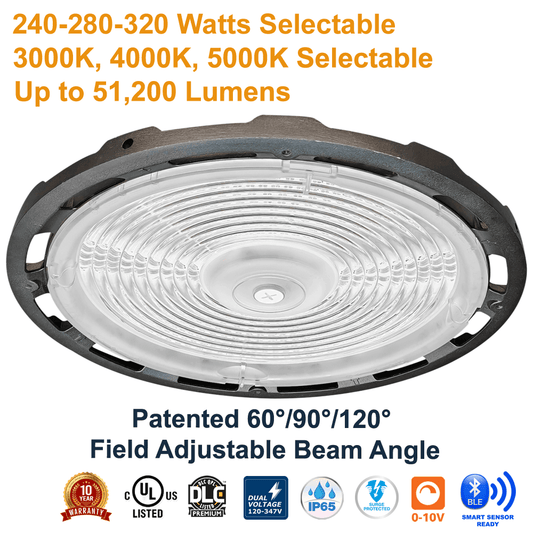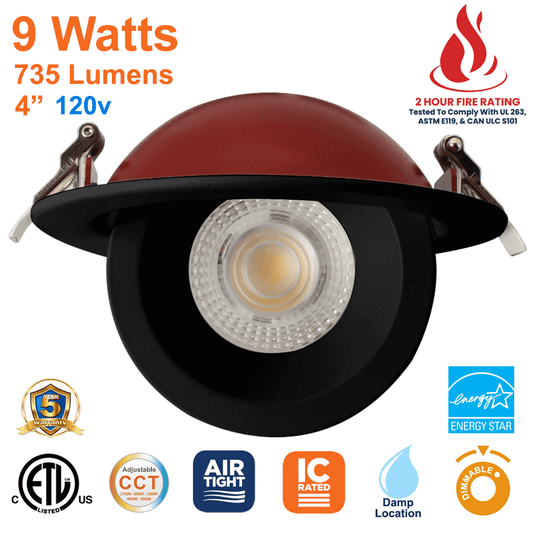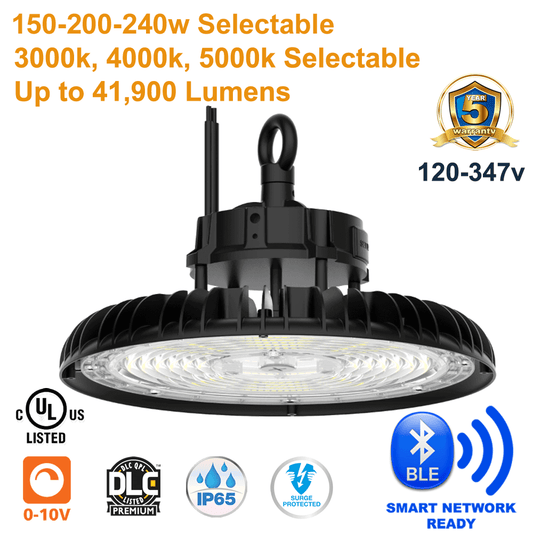Welcome to a world where lighting extends beyond mere illumination. It's a world where commercial-grade LED lights integrate with cutting-edge wireless technology, delivering unprecedented control and optimization capabilities. This is the world of Networked Lighting Controls, a game-changing solution reshaping the commercial and industrial lighting landscape.
What are Networked Lighting Controls?
Networked Lighting Controls (NLCs) are systems that use multiple technologies and strategies to control lighting within a particular network. At LED Network, we pride ourselves on offering industry leading Networked Lighting Control Systems that effortlessly fuse with our premium range of LED High Bay Lights and Panel Lights with more fixture integrations on the way.
"Networked Lighting Controls go beyond simple on/off and dimming functions. They present an integrative approach, blending sensors, timers, and connectivity to offer granular control over your lighting environment."
NLC systems work by enabling communication between light fixtures and control input devices within a specified network. With advanced connectivity options, they provide enhanced flexibility and control over lighting operations.
The Power and Versatility of Networked Lighting Controls
One of the beauties ofNetworked Lighting Controls is their adaptability. They are capable of managing a vast number of light fixtures. Whether it's a compact office space lit by a handful of smart lights or a large recreational facility bustling with hundreds of lights, a robust Networked Lighting Control System can handle it all.
To demonstrate the versatility of Networked Controlled Lighting, let's take a look at how they function in a typical commercial setting.
-
Sensor Integration: These systems often integrate with High Bay Sensors to monitor environmental parameters like ambient light levels, occupancy, and temperature. This data informs intelligent decisions about illumination levels, helping to conserve energy while maintaining optimal lighting conditions.
-
Lighting Management: NLCs provide comprehensive control over multiple lighting functions. They can dim lights, adjust light output to ambient lighting conditions, alter colour temperatures, and even adjust the direction of light in some advanced systems.
-
Interconnectivity: Networked Lighting Controls can communicate with other Building Automation Systems, creating an interconnected network that optimizes overall building performance such as instant demand reduction and other energy saving strategies.
Why Opt for Networked Lighting Controls?
The benefits of Networked Lighting Controls stretch far beyond basic illumination. They hold the key to energy efficiency, operational cost savings, and improved functionality. Moreover, they trump Luminaire Level Lighting Controls (LLLC) in multiple ways. But how?
Find out more in the next segment of our comprehensive exploration of Networked Lighting Controls later in this article. Stay tuned as we dive deeper into the intricacies of this transformative technology, its economic incentives, and how it's future-proofing lighting solutions.
Mesh Lighting Controls Network: An Enabler of Networked Lighting Controls
Before we dive into the benefits of Networked Lighting Controls, it's important to understand the concept of a 'Mesh Lighting Controls Network'. This term refers to a system where each device (light fixtures, sensors, switches, etc.) on the network connects to many others, forming a mesh-like structure. This creates multiple paths for information to travel, increasing the system's resilience and reliability.
In essence, the Mesh Network acts as the nervous system of the Lighting Control setup, ensuring seamless communication and coordination between different components.
"The Mesh Network, in its intricate and robust design, ensures that the failure of one device doesn't bring the entire network to a halt."
Bluetooth Low Energy: The Best Communication Method
Another essential aspect of Networked Lighting Controls is the choice of communication method. Bluetooth Low Energy (BLE) has emerged as the leading choice due to its power efficiency, low cost, and widespread compatibility.
BLE enables real-time communication between lighting fixtures and control devices without draining substantial energy. This wireless technology, paired with our range of Smart Lights, paves the way for highly efficient and reliable Wireless Sensor Networks For Commercial Lighting Control.
The Benefits: Energy Savings and Beyond
While Networked Lighting Controls bring sophistication to your lighting systems, they offer a variety of benefits that go beyond mere convenience.
-
Energy Efficiency: By smartly adjusting lighting based on real-time environmental data, Network Controlled Lights can drastically reduce energy usage, contributing to sustainability and cost-saving efforts.
-
Cost Savings: With minimized energy waste comes reduced utility bills. Additionally, efficient lighting management reduces wear and tear on fixtures, virtually eliminating maintenance and replacement costs.
-
Enhanced Comfort and Productivity: With the ability to fine-tune lighting conditions, a Lighting Control Network can create a more comfortable and productive environment for building occupants.
-
Regulatory Compliance: Energy regulations increasingly favor efficient lighting solutions. By implementing Networked Lighting Controls businesses can ensure compliance with such regulations, avoiding penalties and benefitting from incentives.
Speaking of incentives, DLC Networked Lighting Controls often qualify for rebates due to their energy-saving potential. While the specifics vary by location and utility company, you can typically expect significant cost reductions when implementing these efficient systems.
Up next, we’ll look at how Networked Lighting Controls outperform Luminaire Level Lighting Controls and why these systems are the key to future-proofing your lighting solution. Read on as we continue "Unveiling the Benefits of Networked Lighting Controls".
Networked Lighting Controls Vs Luminaire Level Lighting Controls
The control of lighting has evolved significantly in the last decade, with Networked Lighting Controls presenting a compelling alternative to Luminaire Level Lighting Controls (LLLCs). Though both these systems aim to maximize energy efficiency and user comfort, a Network Lighting Control System will offer additional benefits.
While LLLCs allow for independent control of individual luminaires, its effectiveness is limited to the capabilities of the particular luminaire. On the other hand, Networked Lighting Controls create an interconnected system, where all components (including High Bay Sensors and UFO High Bay LED Lights) communicate and work together. This setup facilitates more nuanced control, such as zoning, grouping, scheduling, occupancy detection, and advanced features like daylight harvesting.
"Networked Lighting Controls not only empower you with unprecedented control over your lighting environment but also enable a seamless integration of future advancements."
Are Networked Lighting Controls Future-Proof?
When we talk about 'future-proofing' in the context of Network Controlled Lights, we refer to the system's ability to adapt and incorporate future technological advancements. Given the rapid pace of technological development, future-proofing is more important than ever. And this is where Networked Lighting Controls truly shine.
These systems' modularity, adaptability, and scalability make them ready to embrace future enhancements without requiring extensive or costly modifications. Whether it's the integration of advanced LED High Bay Lights or improvements in sensor technology, Networked Lighting Controls are primed for the future.
Moreover, the widespread adoption of open standards, like BLE, ensures compatibility with a wide range of devices, further cementing the future-proof nature of networked lighting controls.
A Powerful Ally for Your Commercial and Industrial Spaces
In the grand scheme of lighting advancements, the adoption of Networked Lighting Controls marks a significant milestone. From enhancing the efficiency of Factory Lighting to improving the ambiance of Recreation Facility Lighting and Office Lighting the benefits of these systems are multiple.
Embrace the Networked Controlled Lighting revolution, enjoy the multiple benefits it offers, and step confidently into the future of lighting. The age of Networked Lighting Controls has arrived, and it promises to light up our commercial and industrial spaces like never before.


























